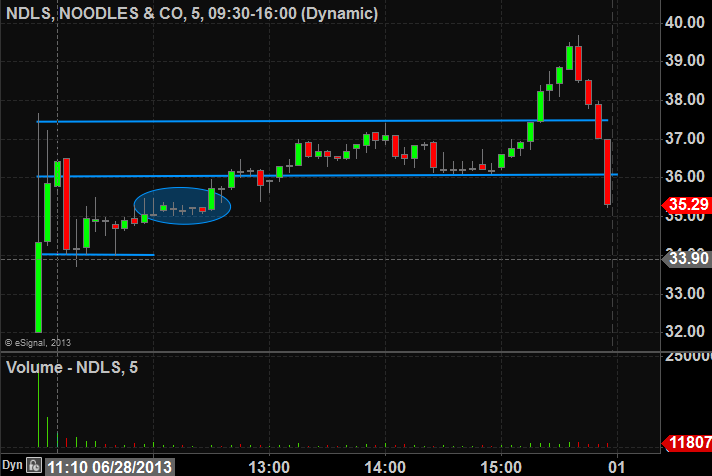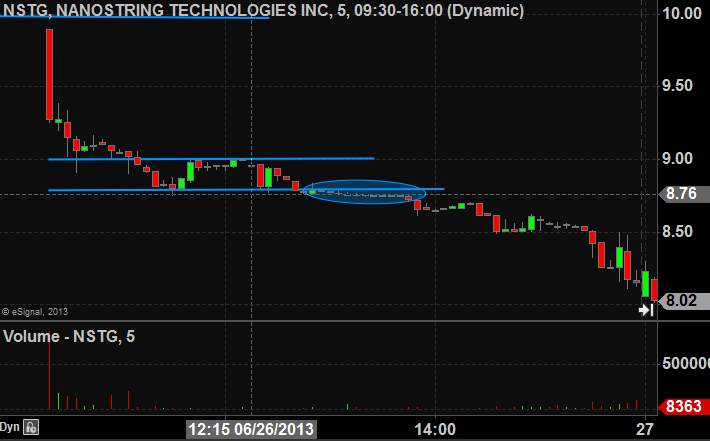“Monkey Trading” is a broad term I have used lately to describe some of the short term trading I observe that shows a lack of respect for the market. Whether it is a failure to have a detailed trading plan or understanding the nuances of how stocks trades in the HFT dominated marketplace Monkey Trading usually leads to a transfer of wealth from the trader to other market participants.
SMB has taught seven core trading principles since we began in 2006 (SMB Fundamentals). One of my favorites is “Proper Preparation”. This trading fundamental as defined by SMB is doing the necessary homework to determine which stocks may offer the best risk/reward setups on a given trading day. For many years the IPO market for US equities has been in decline offering few short term trading opportunities. But there has been a shift in 2013 and we are seeing far more IPOs issued that have offered good trading opportunities on Day 1.
Here are a few things I consider prior to trading an IPO on Day 1.
- How many shares are issued–The number of shares offered to the public can deeply influence the price when shares begin trading. LinkedIn offered less than 7.5 million shares in their IPO, less than 10% of their outstanding shares to the public in 2011 and this helped to create a 100% pop on the first day of trading. Zynga which offered 100 million shares was a complete dud on its first day of trading.
- Who is underwriting the deal–If the larger bulge bracket banks underwrite a deal it is more likely to have greater institutional demand and traditionally these larger banks will commit capital to supporting the issue once trading begins on Day 1. Examples of top underwriters include JP Morgan, Morgan Stanley, Goldman Sachs, Bank of America and Credit Suisse.
- Where the deal is priced–Underwriters will establish price ranges for the shares being sold to institutions before they begin trading in the public markets to gauge the demand for the deal. If the underwriters increase this range prior to shares being sold it increases the odds that shares will have a “pop” on Day 1 offering . Another factor on pricing I look at is where in the “range” the deal is priced. A pricing towards the top of the range means good demand for the deal and a greater likelihood of an after market pop.
- Where the stock initially trades when it opens–If a stock opens more than 20% above its pricing this means there is a large imbalance of supply/demand and the stock is more likely to trade at significantly higher prices on Day 1.
- Sector of the company–If the company is in a “hot” sector such as biotech it increases the likelihood of some retail “chasers” pushing up the price when it begins trading. An IPO in 3D printing is definitely something would catch my attention right now as is something in the solar sector or “cloud services”.
As with anything in trading it is about percentages and even if there is great demand for the deal it may still be a dud in the after market. Proper preparation gives me a better idea in advance where I should be focusing my finite “mental capital” when an IPO begins trading. But once trading begins price action will largely dictate my trading decisions. Let’s take a look at two recent IPOs to see what can be gleaned from their pricings and trading action in the after market.
IPO #1 NSTG:
Underwriter: JP Morgan
Expected Range: $13-$15–pricing $10
number of shares: 5.4 million–37% of outstanding shares
The pricing at $10 well below the expected is a huge red flag. This means that JP Morgan one of the most respected investment banks in the world could not entice investors to pay more than $10 a share for the 5.4 million shares being offered. NSTG opened for trading at 9.90 below the IPO price and trended lower for its entire first day of trading. Once a stock trades below its pricing it is a guessing game as to where it might bottom as no price levels of interest have yet to be established. One of the best shorts of the past several years was when FB traded below its IPO price of $38. It didn’t find a bottom until $17ish.
IPO #2 NDLS
Underwriter: Morgan Stanley & UBS
Expected Range: $13 to $15 raised to $15-$17–pricing $18
number of shares: 5.4 million shares–24% of outstanding shares
The increase in the expected price range and the final pricing above the top of the range was a signal of very strong institutional interest in NDLS. The deal was underwritten by Morgan Stanley which is the #1 bank for IPOs although we have seen a few chinks in their armor in the past couple of years with some duds in the after market including FB. NDLS began trading at $32 and topped out above $39 offering a very good opportunity on the long side.
Steven Spencer is the co-founder of SMB Capital and SMB University and has traded professionally for 17 years. His email is [email protected].
No relevant positions



